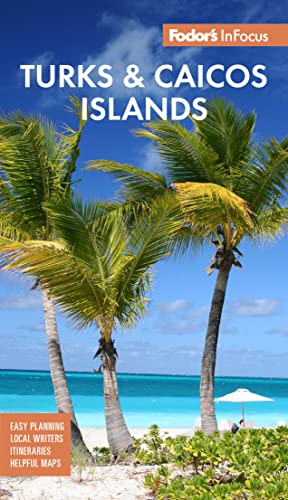Welcome to the Turks and Caicos
The Turks and Caicos are made up of more than 40 islands cast upon breathtakingly beautiful cerulean waters. Although white, soft-sand beaches and calm, warm waters are shared among all the islands, their landscapes vary. The flatter, more arid islands of Grand Turk, Salt Cay, South Caicos, Pine Cay, and Providenciales are covered with low-lying bush and scrub, whereas the islands of Middle Caicos, North Caicos, and Parrot Cay are greener, with more undulating landscapes. In addition to these eight inhabited islands, there are the many smaller cays and uninhabited East Caicos that help make up this southern tip of the Lucayan Archipelago, just 575 miles (862 km) southeast of Miami on the third-largest coral reef system in the world.
Discovery
Although the first recorded sighting of the Turks and Caicos Islands was in 1512, there is a much-disputed possibility suggesting that Columbus first made landfall on Grand Turk on his voyage to the New World in 1492. Today this delightful string of islands has become an exclusive and highly prized destination, perhaps because of their history of anonymity.
Changing Hands
The Turks and Caicos Islands were controlled by France and Spain in the past, and then indirectly through Bermuda, the Bahamas, and finally Jamaica before becoming a separate autonomous British Overseas Territory with its own governor in 1973. These islands were initially desirable because of their salt production. In fact, there was a time when Salt Cay provided much of the salt that supplied the whole of United States and Canada.
Reefs and Wrecks
It's estimated that some 1,000 shipwrecks surround the islands. Some island residents may be descendants of those shipwrecked off the Spanish slave ship Trouvadore, which ran aground off East Caicos in 1841. But the most famous wreck is probably that of the Spanish galleon Nuestra Senora de la Concepcion, which sank after hitting a shallow reef in 1641 in the Silver Shoals, between the Turks and Caicos and Hispaniola. William Phips had recovered a small portion of the treasure by 1687. However, Burt Webber discovered the majority of it in 1978. The wreck contained treasure worth millions, as well as priceless artifacts, including Chinese porcelain from the late Ming period.
Tumultuous Times
Two female pirates, Anne Bonny and Mary Read, captured a Spanish treasure ship in 1718, then settled on Pirate Cay, which is now known as Parrot Cay. Only two years later a pirate named Francoise L’Olonnois moved onto French Cay, using it as a base from which to raid passing ships. Many say that his treasure is still buried there on the edge of the Caicos Banks. On the south shore of Providenciales carvings can be found among the rocks, supposedly maps to buried treasures.
The People
Only 31,500 people live in the Turks and Caicos Islands. Less than half are "Belongers," the term for the native population. All are descendants of loyalist slaves, brought south after the American Declaration of Independence drove the loyalists to seek another haven in which to grow their cotton and sugarcane. The ancestors of those from Grand Turk, Salt Cay, and South Caicos worked in the salt industry, descended mostly from Bermudian slaves who settled here in the 1600s. Nowadays the majority of residents work in tourism, fishing, and offshore finance.
The Rise of Providenciales
The political and historical capital of the country is Grand Turk, with the seat of government there. Most of the tourism development, however, is on Providenciales, more commonly known as “Provo.” Thanks to the beauty of its north shore, visitors may enjoy the miles of ivory sand that stretch along its graceful curve; Grace Bay is consistently rated as the best beach in the world. Provo has become a hub of activity since the 1990s, as resorts, spas, and restaurants have been built and the resident population has grown to some 15,000. It is also the temporary home for the vast majority of visitors who come to the Turks and Caicos Islands.
Remnants of History
Marks of the country's colonial past can be found in the wood-and-stone Bermudian-style clapboard houses that line the streets on Grand Turk, Salt Cay, and South Caicos. Throughout the Caicos Islands, visitors may explore the ruins of several loyalist plantations now protected by the Turks & Caicos National Trust; slave quarters, a great house, stone pens, wells, and cauldrons all draw us back in time to feel what lives were like for those growing cotton and sisal in these islands. Much of this history is also recounted in the Turks and Caicos National Museum on Grand Turk.




